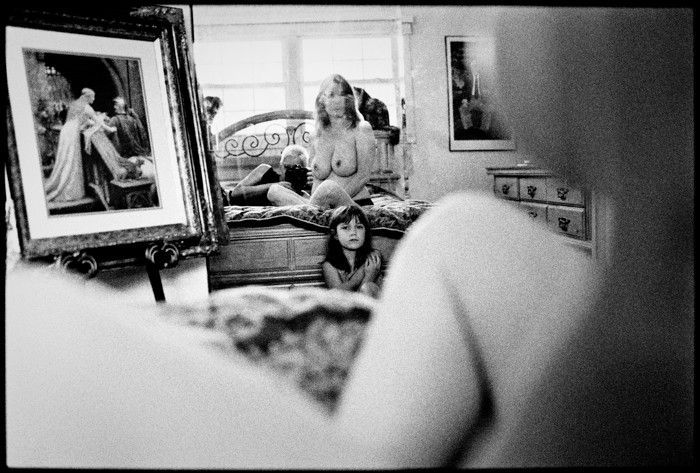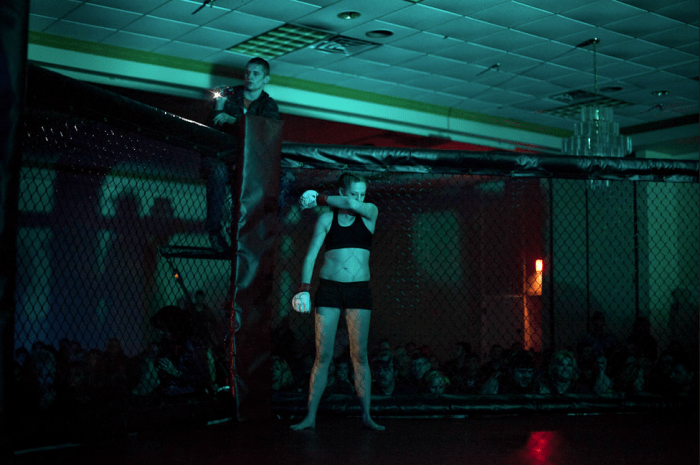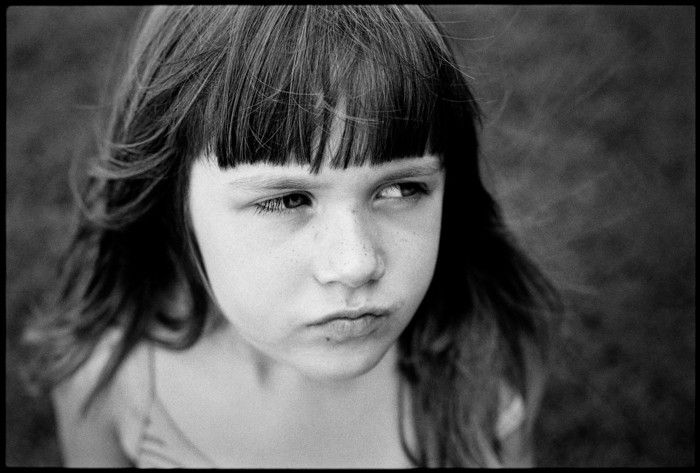blog
Interview with photographer Leasha Overturf

Charlie’s Angels
Yvette Meltzer: Leasha, how did you first become involved in photography?
Leasha Overturf: My mom had an SLR camera and multiple lenses that intrigued me. Of course she was hard pressed to let me ever use it. I loved looking at magazines and daydreaming about traveling with my own camera. I grew up in Bluford, a town in the middle of nowhere in Southern Illinois with only 40 students in my high school class. Interestingly enough, at this tiny high school, a photo class was offered. I was on a fast track taking academic classes that would help me get a scholarship to get the heck out of small town America, so fitting the photo class into my schedule was not logistically possible. Still, I was lucky that the teacher, Mr. Adams, recognized that I had a passion for the camera and taught me about photography on my lunch hour. Soon I became the little high school’s “school photographer.” Initially I wanted to go far away to college but my budget did not allow for that. Luckily that same awesome photo teacher turned me on to the fact that Southern Illinois University had an awesome photo program only 1.5 hours away – and I could afford it!
YM: And what drew you to photography as your medium as an artist?
LO: I liked the idea of stopping time and seeing the world from the view of a 35mm lens. And, I loved the confidence the camera gave me. Sure, I would fantasize about being a great painter, but at the end of the day I loved holding a camera in my hands more than a paintbrush. I saw the world in B/W and photography helped me find my voice.
YM: The February/March 2015 issue of F-Stop includes images from your project Family View. Can you tell us about this project and what led you to doing it?
LO: I am always turning the camera on my family. Family View is a combo of two initial projects that merged to make one new one. The first of the two was an ongoing project documenting my mother’s health and her aging process. I documented her until she passed away in December of 2009. The second one was a documentary project I began before my sister’s breast augmentation. Because I had already been photographing her and her relationship with her daughters, when my sister decided to have breast augmentation it was a given that I would photograph that process as well. Not only would I be getting the family aspect, I would also be getting the ultimate view of body image. These two series merged together to become my Family View project. For me, Family View is a project about body image and family dynamics.
YM: How does your family feel about your turning the camera on them?
LO: I feel fortunate that they are so used to it. At times they actually anticipate that I’m going to take pictures of them. My mom was a part-time model in her youth who always loved being in front of the camera (and then behind it too). Sometimes she did not like being photographed in b/w or being photographed in vulnerable situations but in the end she always allowed me to do so because she recognized my passion for it. In our family everybody always merges together. This close dynamic allows for no privacy time no matter the state of dress – or undress. Thus, the camera is always part of my dress and they have come to accept it. As a photographer it’s easy to be the observer, but for me I’m more of an embedded participant that steps in and out of the situation.

The Night Before
YM: Do you have a favorite image in this series? If so, which one and why is it the image that speaks to you most favorably?
LO: This is a really tough question. I love the opener that I call Charlie’s Angels, an image of my mom, my sister and me. The other true favorite image is that of my sister and her youngest daughter lying in the bathtub. I took that image the night before my sister had her surgery. Hannah, my niece, was very stressed out that her mom was having this surgery. I love the innocence of Hannah laying behind her mother with her little hands and feet and how she kind of becomes a crucifix in the image. I absolutely couldn’t fathom my sister changing the lovely breasts that she had – the same breasts that at one time fed her two daughters. In this photo my sister’s breasts are dominant in the image but at the same time, it’s such a “quiet moment” with Hannah’s eyes closed and my sister with somewhat open eyes as she appears to wipe away the old as she prepares for the new.
YM: Can you discuss your process for making these images or your creative process in general?
LO: Part of my process is to always have a camera with me. After years of shooting something as personal as my family in ALL situations, they have to know by now that I may start taking photos at any moment. I just quietly start shooting things as they unfold. After a bit, my camera and I just blend in.
YM: What is the intended end or purpose for the Family View project?
LO: A few years ago I was invited to participate in a 3–person exhibit with a family theme. My long-term goal now is to take this version and add what has transpired in my family over the past 5 years. Grow it if you will. My mom has passed. My niece Hannah is almost grown up. My other niece has a child of her own. My sister has had more plastic surgery…so in essence a new project will unfold by revisiting this project and expanding it.

Look at Me
YM: Tell us a little about your background as a photographer and where you are now with your work.
LO: While in college I initially wanted to be a war photographer. I was a bit obsessed with Robert Capa and the idea that photographers went off to photograph in war. Then I realized I don’t know geography or history well enough to be an informed war photographer, so I switched to a documentary track. While studying documentary photographers I also fell in love with the portrait. I eventually merged together the idea of documentary and portrait photography. In general I have a hard time making time for my personal work because I have a day job working as a producer for the well-regarded photographer Paul Elledge. We travel and work on all kinds of assignments. It’s a time intensive job, but I’m happy to be in a creative environment. And, sometimes I serve as a second photographer on some of the projects. Needless to say I have to be very diligent to carve out time for my own photography. Hence so much self-portraits! I generally have more than 2 projects going at once and I’m literally always years behind on editing and processing my own work. I was very slow to take on digital and I’ve been behind ever since.
YM: What project are you currently working on?
LO: The working title of my new project is 714 Conger. I started a project at the end of summer 2014 that entailed visiting the neighborhood I grew up in as a young child. Some of my formative years (from ages 5 to 8) were spent living in a housing project in Mt. Vernon, IL. Anytime that I return to Mt. Vernon I’m intrigued by the neighborhood and its buildings. It’s much more sparse and smaller than what I remember thinking it was as a kid. It’s more abandoned in a sense as well. It’s familiar and yet not. On one level I can’t even believe that I lived there. My mom provided what she could for my sister and me, and at the time it was great just to have a roof over our heads. But other kids from school would sometimes make fun of us for living there. My mom could not wait to get us to a new place. A dear friend encouraged me to go back to explore and photograph in and around that neighborhood. He drove me there to make sure that I was safe. And the idea of doing a longer-term project came to life.
As I started the project I quickly realized that it was also a statement about making choices. We all have choices…you make the choice for yourself to be happy or to be sad, etc. You can choose to leave or choose to stay. I see so many people in my hometown that continually blame the system rather than choosing to make better choices. I chose to take a different path proving to myself that I am smart and just as good as the kids that had “everything”.
YM: You mean everything that money can buy?
LO: Yes. And, as an adult I now know that the concept of “everything” is not as simple as what money can by. It’s much much greater than that. As I photograph some of the kids that now live in and around the neighborhood of the projects they seem mystified that I even want to come back. They always say I’m way different than they are and I tell them that I used to be them. And I find myself giving a mini-workshop on the message of “you can do whatever your dream is. You just have to work for it.”
I’m in the middle of a lot of transitions and choice has been a key factor. I wanted to go back to my roots and investigate. Speaking of transitions I’m also working on a self-portrait project that has a working title called Transition. No details to share on that yet, but as usual I’ve got more than one thing going on. I’m also photographing my stepdad’s health decline and investigating how to best photograph the demise of dementia.

from the series Fight Night
YM: Leasha, someone has to get up really early to keep up with you and all that you do. I appreciate your making the time to respond to these interview questions, as I am sure that our readers will be as well.
YM: What is your process for photo projects?
LO: As far as my general creative process… Sometimes I have a need to photograph a desired subject without fully understanding why. Then I thread together a theme after having shot for a while. Everything is intentional, just not obvious to me at first. Another way that I work lately is to create lists of phrases or project titles that come to mind. I write them all down to create new ideas. They will either become their own project or the title of an already existing body of work. And of course I always have a camera with me so I’m ready for any situation to unfold.
YM: What or who inspires you as a photographer?
LO: Photographers who inspire me include Danny Lyon, Larry Clark, Bruce Davidson, Diane Arbus, Richard Avedon, Irving Penn, and Paul Elledge. Also, Nicholas Nixon, Duane Michaels, Ralph Eugene Meatyard, Helen Levitt…really there are too many to choose! The list could go on for days.
Artists who inspire me are Picasso, Francis Bacon, Alexander Calder, and Giacometti. And Movie Directors: Martin Scorsese, David Lynch, and Wes Anderson.
Also, I’m completely inspired by a sunny day! On an odd note, I often find that when staying in a hotel, I have the desire to shoot images – particularly my self-portraits. Still sorting out the why in hotel rooms, but I love the implication of the past stories they hold, many mirrors, etc.
YM: Who are your influences?
LO: Oh, I have more than one… One of the most influential early on was my favorite professor, Gary Kolb. He encouraged experimentation but he was also excellent at guiding me in all of the directions that interested me. Gary is the one that let me know it’s okay to have more than one path in photography.
My documentary inspirations are also influencers, such as Danny Lyon and Larry Clark. I have some very creative friends that also influence me.
Paul Elledge is a huge influence and my mentor. You don’t work with someone for 25+ years without being influenced by him or her. He keeps me challenged and he is ever changing and challenging himself so on one level I continue to learn while at my job working as his producer. We also teach workshops together and that experience has also been influential.
YM: Can you say something about the workshops you teach with Paul Elledge?
LO: Paul and I compliment each other. We are opposite in our approach. He is tough and I’m gentle, but direct. He likes to say if he breaks a student down, I’m the one that builds them back up. We don’t teach technical workshops. And, that is really hard for people at times. We are not about f-stops and gear. It’s feelings first. One rule of our workshop critiques is that no technical questions or comments are allowed until after a participant has shared how a photo makes them feel. Teaching gives me the opportunity to share my own work, which I love.
YM: What defines a “good” photograph to you?
LO: It’s a good photograph if it evokes an emotion from me – if I catch my breath or if my heart skips a beat. I’m also a stickler for composition and line – making sure every inch of the frame is really what it needs to be.
YM: What do you hope people see or feel or perhaps learn when they look at your photographs?
LO: My biggest goal for any image that I make is for people to feel an emotion. Whether it’s about their life and my image makes them feel it, or they feel emotional about being allowed into my world. I want people to feel honesty and integrity whether it’s a portrait, a self-portrait or a street scene.

Hannah
YM: If you could own one photograph whose would it be and which image?
LO: Diane Arbus’ Child with Toy Hand Grenade in Central Park, New York City (1962).
YM: You sure knew immediately!
LO: I’d also love to own any vintage Danny Lyon image. I feel exceptionally grateful to already own one of my all time favorites, Couple Kissing from his “Uptown Chicago” series of 1965.
YM: What is the most challenging work you have ever done?
LO: A bulk of my work is very personal. Making my images is how I escape or step outside of the situation I’m trying to understand. Photography is like therapy in a way. The challenge comes in editing and finishing out my projects and ideas. For instance, my mother was my muse for many, many years. In 2005 I started photographing her decline in health. She was my on-going star in a lot of what I documented. I photographed everything in her final year of life when I was not directly taking care of her: in the hospital, at home, her nurses and doctors, while she was in hospice, all of the moments before her passing and right after. She died in December of 2009. I still have not been able to fully edit that work. So that has probably been my biggest challenge.
I also have a knack of getting in the way of myself. I choose to get involved in projects that are 5 hours away from where I live. Or I do things like declare to do a self-portrait everyday for a year! Those are logistic challenges…but challenges nonetheless.
YM: What is the best career advice you have ever received?
LO: It’s not about the gear you own…it’s about your ideas. Rather than continually buying gear, put money towards experiences that may open your mind’s eye. Look inside of yourself before you go looking for others to solve the issue that may be at hand.
YM: What advice do you have for people who would like to make photography a career?
LO: BE PASSIONATE. Don’t take anything for granted. Be humble and work really hard. These days one has to eat, sleep and breath photography in order to succeed in the digital world where everyone is a photographer simply because they have an iPhone.
YM: Thank you Leasha for reflecting on your work and sharing your thoughts, images and statements so generously. While Family View is the project whose images are in the February/March issue of FStop, I’d like our readers to know that you have other projects of interest: Fight Night, Lost in Mt. Vernon, Another Year, Details of Maintenance. I imagine we’ll be seeing and hearing a lot more about you and your work.
To see more of Leasha’s work: www.leasha.com
Events by Location
Post Categories
Tags
- Abstract
- Alternative process
- Architecture
- Artist Talk
- Biennial
- Black and White
- Book Fair
- Car culture
- charity
- Childhood
- Children
- Cities
- Collaboration
- Cyanotype
- Documentary
- environment
- Event
- Exhibition
- Family
- Fashion
- Festival
- Film Review
- Food
- Friendship
- FStop20th
- Gun Culture
- Italy
- journal
- Landscapes
- Lecture
- love
- Masculinity
- Mental Health
- Museums
- Music
- Nature
- Night
- photomontage
- Podcast
- Portraits
- Prairies
- River
- Still Life
- Street Photography
- Tourism
- UFO
- Wales
- Water
- Zine

Leave a Reply